Prepare: Water Containment for Emergency, Conservation, and Off-Grid Living
Water is essential for Life. It's good to be prepared for when water may not be as readily available as usual. If you are able, it's a step in the right direction to save the tap water, collect rain water for irrigation and other purposes. Containing rain or other sources of water may become necessary when living off grid - especially if there is no well, spring, creek, or other sources of fresh water.
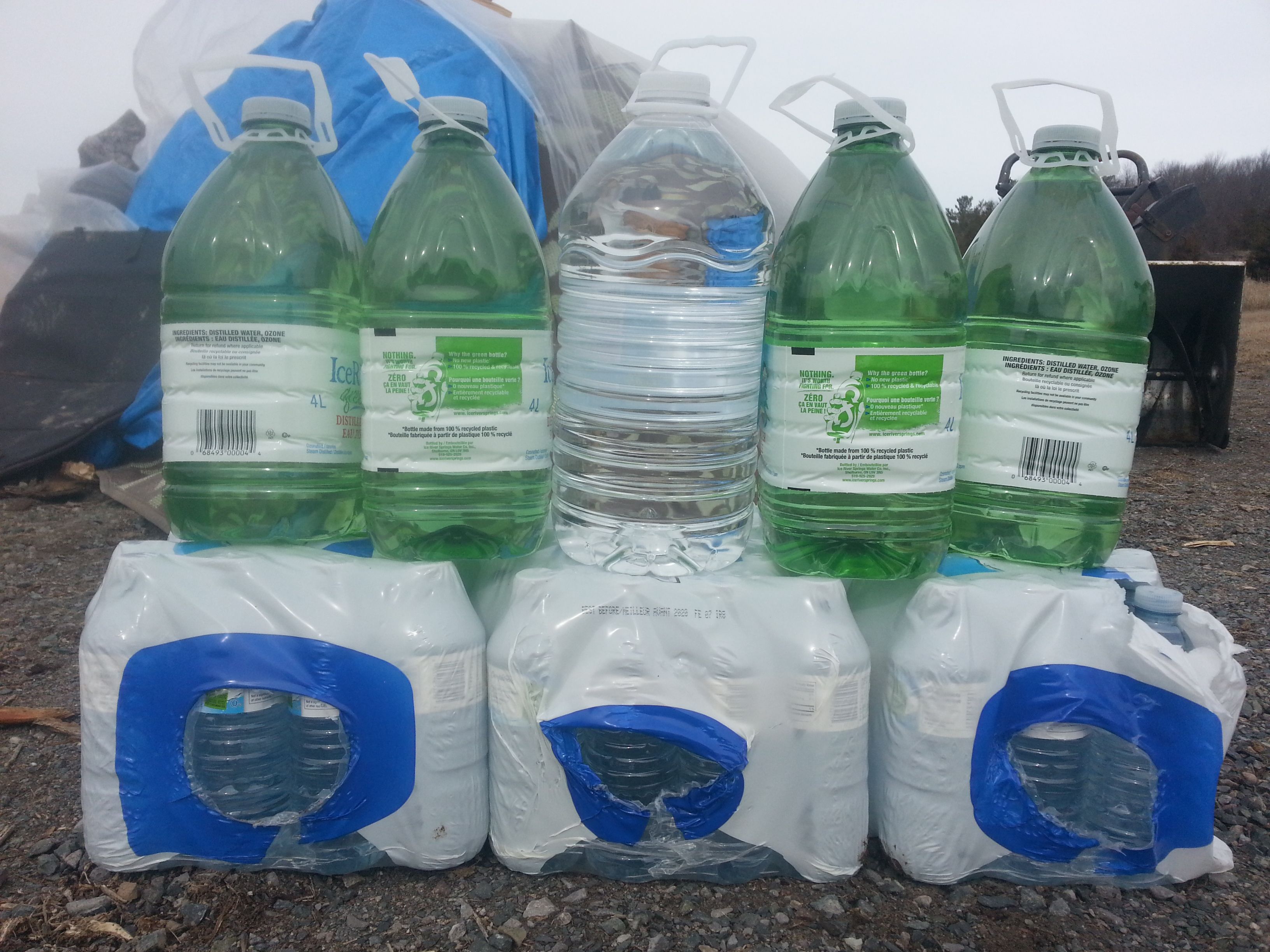
Emergencies and Natural Disasters
It would be great to have a stack of ready-to-drink water. Any clean food-safe containers can also be filled up before an emergency with chlorinated tap water. Store in a dark, above freezing (unless your container can handle freezing) location for future use. Store bought bottled water keeps for 5 years, chlorinated or iodine added self contained water should be changed annually.
When drinking and cooking food it is important to use clean drinking water. Water used for cleaning dirty dishes, laundry, bathing, toilet flushing, car washing, and irrigation are not as essential in an emergency.
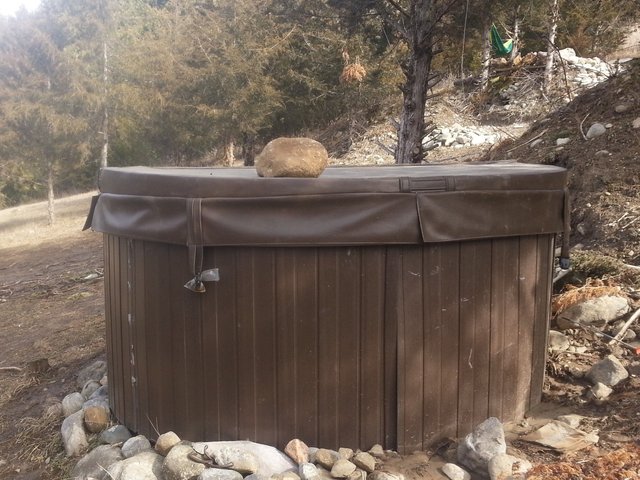
A great emergency source of non essential water could be water from a hot tub or pool. If you wanted to drink or cook with that water, it may first require a little treatment. The hot tub in the picture above we brought empty and filled up with the overflow water from two heavy rains.
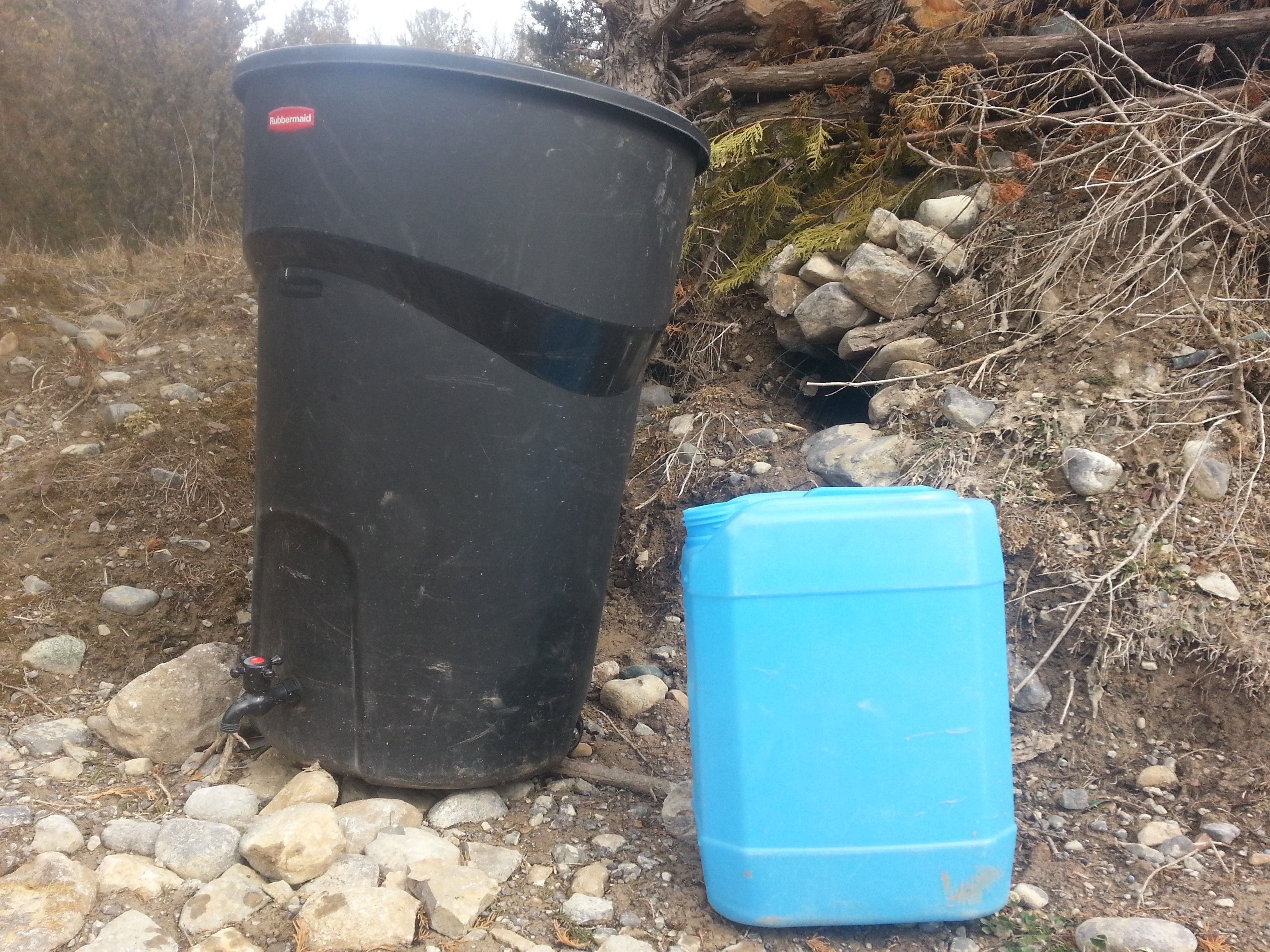
Living off-grid and Water Conserving
Rain and other source water containment becomes much more important when living off-grid or conserving. For non essential water, most containers that can hold water will do. In the picture above my converted trashcan holds non essential water, the blue food-safe tote is reserved for clean drinking water.
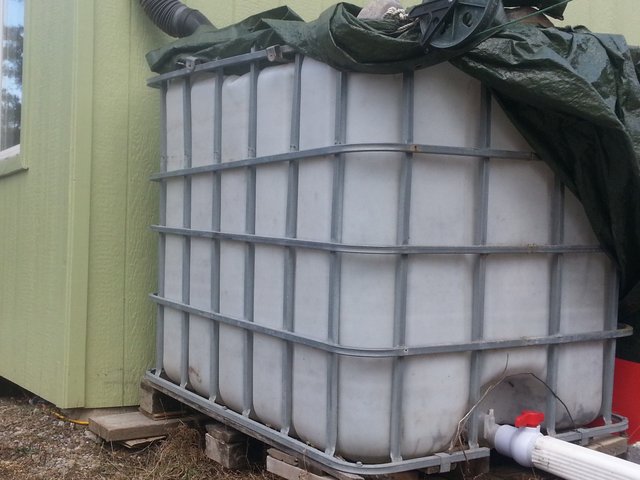
For more serious rain water collection, in the picture above, is the 1000 Litre (250 Gallon) water tote collecting the rain water from the cabin roof downspout. The biggest downfall of the above ground tote for me is the winter freezing, but there is snow and ice to go into the wood stove boiler. The trouble with snow is that it boils down 10 to 1 water. That's a lot of snow. Luckily it collects en mass on my patio covering tarp.
The green tarp on the tote, in the picture above, is usually tightly pulled down over the tote to prevent green algae growth from the sun. If there is red growth in the contained water, it's most likely bacteria growth. To help prevent bacteria and algae growth, Chlorine or Iodine can be added.
For Chlorine water treatment:
"Add 1/4 teaspoon (16 drops) of bleach per gallon of water if the water is cloudy and 1/8 teaspoon (8 drops) if the water is clear."

For my larger off-grid homestead water collection needs, in the picture above you can see the green plastic entrance risers to my underground 4000 Litre (1000 Gallon) cement Cistern. The underground rectangular shaped box will prevent my contained water from freezing. Instead of a well, we opted for this water cistern. We will soon receive a 4000 Litre (1000 Gallon) water delivery from a local drinking water delivery truck. $100 for the water and delivery. Over the summer we figured out how many liters of water we were consuming with drinking and cooking. We calculated that two water deliveries per year would be more than enough. If the water delivery truck ever stops, we'll fill the cistern with rain water and treat it for drinking accordingly. Water treatment will be covered more in depth in a future post.
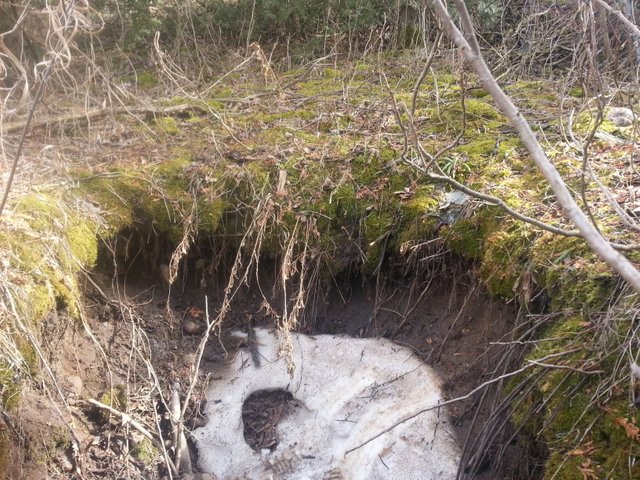
Above is a picture of a previous owners attempt to dig a water hole. It was dug in the lowest part of the valley. For a quarter of the year it does fill with water, but the distant location and elevation makes it not very useful to me for irrigation.
Along the half of the valley slope that my property is on, this spring and summer I will be adding ditches, terraces, and water reservoirs for passive water directing, collecting, and dispersing - for irrigation and eventually fish farming.
Other Common Water Sources
- Dug or Drilled fresh water wells (be sure to have a backup hand pump or electricity)
- Natural Springs
- Pumped from Lakes or Streams with proper treatment.
- Other methods could include distilling and collecting condensation.
Click the picture below to watch a calming 1 minute Video of the Creek and Bridge just across the property line.
You may find some of my previous posts useful:
- https://steemit.com/homesteadersonline/@jackdub/off-grid-how-to-calculate-the-battery-bank-size-for-your-off-grid-system-or-emergency-power-needs
- https://steemit.com/homesteadersonline/@jackdub/back-acres-how-to-pull-start-a-small-engine
- https://steemit.com/homesteading/@jackdub/my-solar-powered-cabin-setup
Have a great day!
Yeah, great post man, if folk out there havent got alternative water sources or havent got the means to collect and purify, they are gonna be screwed after 2 days....
If they have he gear and the means, then they have to be confident enough to make the decision to 'break out' their gear and use it....
I suspect there are a lot of folk that do NOT know or do NOT have the gear..
You're building a pretty good set up there @jackdub.
I hope to emulate in the not to distant future :)
Please see here for the prepper curation post where I shared your post.
Thanks for putting that Prepper Curation together @goldendawne. It is a well done curation shining a light on preparedness posts that many people may not have otherwise known were available on Steemit :)
Congratulations, You Won.
Your post is in the top 3 and has won a prize in our #lsphotocompetition. Your prize money will be transferred to you shortly.
Don't forget our competition runs weekly and the next is just starting.
Click the link for our latest competition
Thanks that's awesome :)
You got a 50.00% upvote from @greengrowth thanks to @jackdub! You too can use @GreenGrowth by sending your post URL in the memo field to the bot. Minimum bid is 0.01.
If you feel this post is spammy or not worthy of @Greengrowth you can contact a moderator in our Discord Channel https://discord.gg/6DhnVTQ.